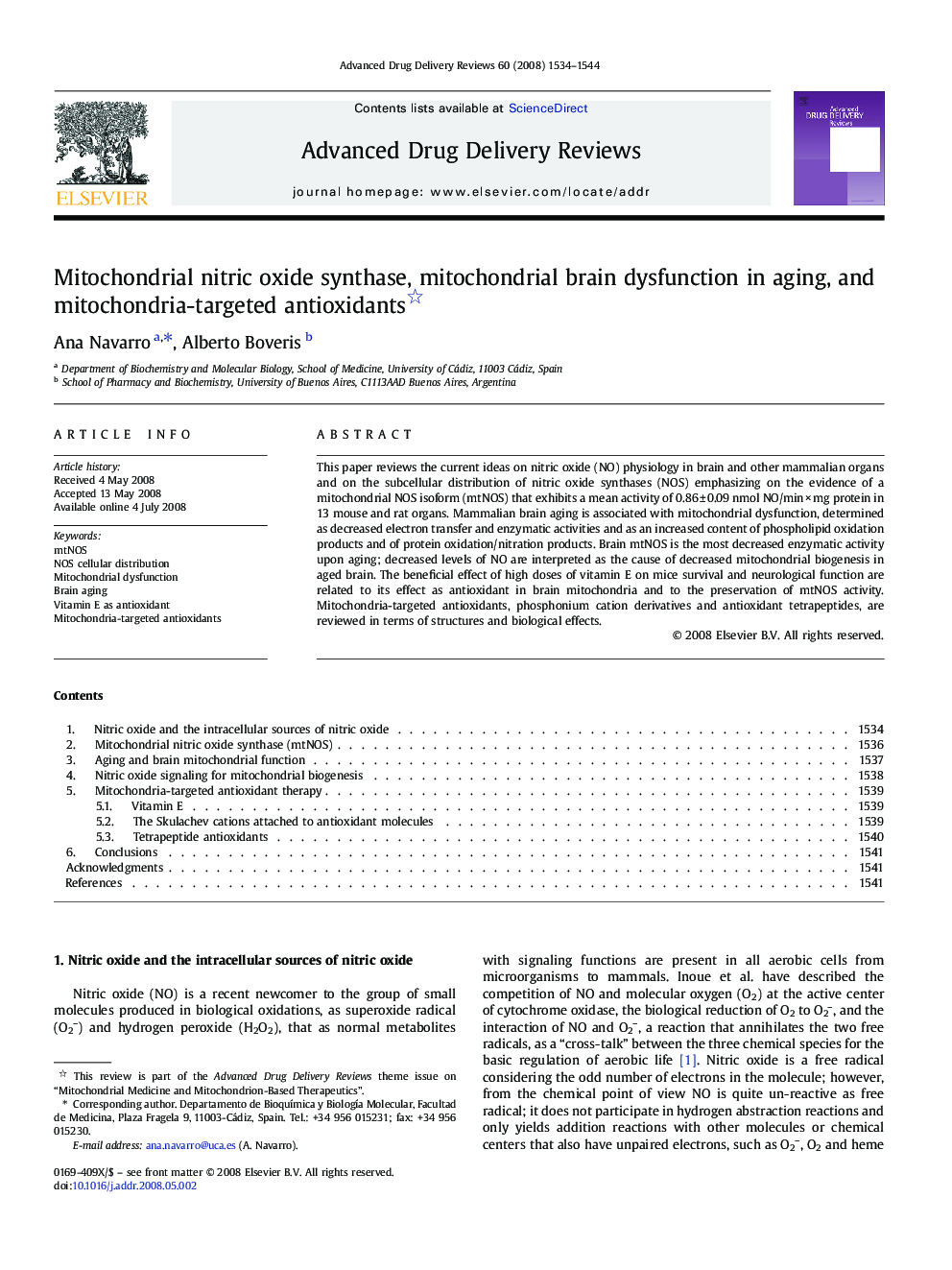| Article ID | Journal | Published Year | Pages | File Type |
|---|---|---|---|---|
| 2071802 | Advanced Drug Delivery Reviews | 2008 | 11 Pages |
This paper reviews the current ideas on nitric oxide (NO) physiology in brain and other mammalian organs and on the subcellular distribution of nitric oxide synthases (NOS) emphasizing on the evidence of a mitochondrial NOS isoform (mtNOS) that exhibits a mean activity of 0.86 ± 0.09 nmol NO/min × mg protein in 13 mouse and rat organs. Mammalian brain aging is associated with mitochondrial dysfunction, determined as decreased electron transfer and enzymatic activities and as an increased content of phospholipid oxidation products and of protein oxidation/nitration products. Brain mtNOS is the most decreased enzymatic activity upon aging; decreased levels of NO are interpreted as the cause of decreased mitochondrial biogenesis in aged brain. The beneficial effect of high doses of vitamin E on mice survival and neurological function are related to its effect as antioxidant in brain mitochondria and to the preservation of mtNOS activity. Mitochondria-targeted antioxidants, phosphonium cation derivatives and antioxidant tetrapeptides, are reviewed in terms of structures and biological effects.
